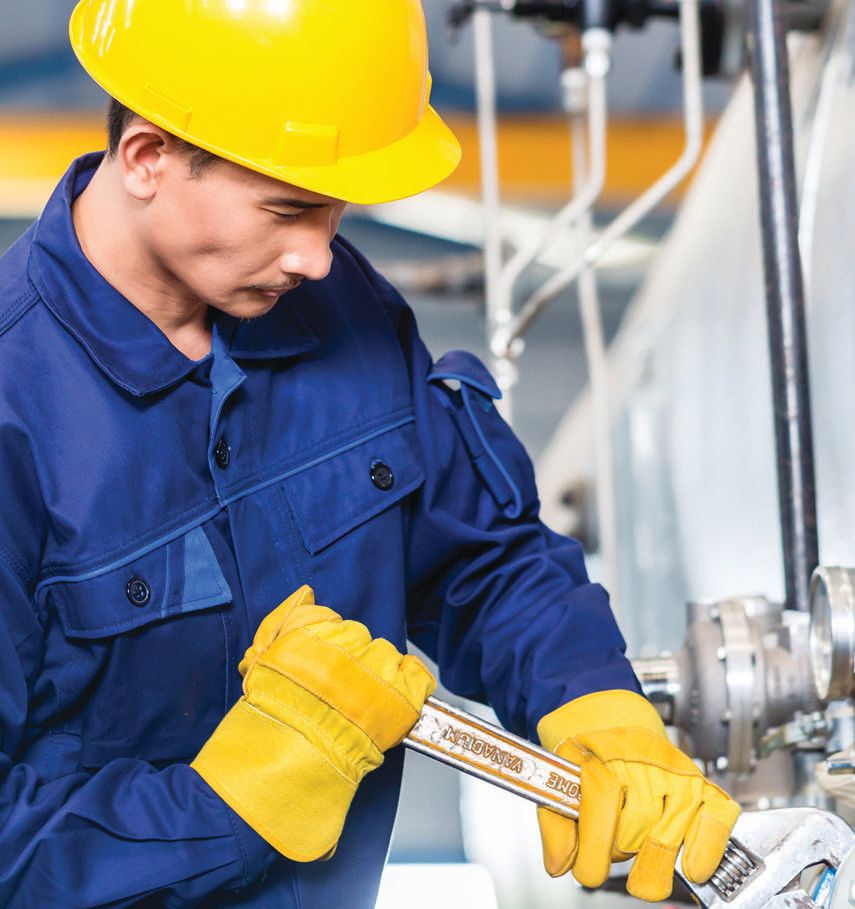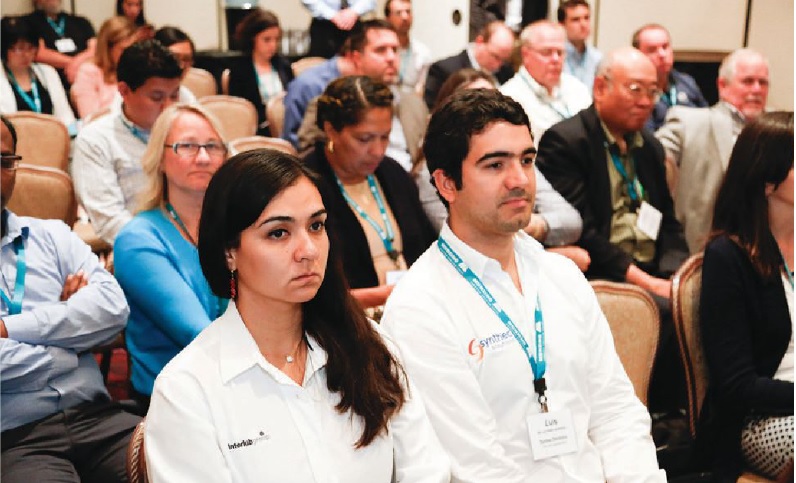What sort of changes would you like to see from your oil analysis provider?
TLT Sounding Board November 2016

© Can Stock Photo Inc. / Kzenon
Faster reports and clearer information top the list of changes TLT readers would like to see from their oil analysis vendors. Most survey respondents said they would like to see a report within 24 hours of oil sampling. Many readers asked for technical information in oil analysis reports that relates better to the changes that need to be made in the machinery. There also was a strong sentiment for paperless reports. One reader asked that Total Base Number be included in the data set, even though doing so would increase the cost of the report. But despite these quibbles, most STLE members trust their oil analysis vendors. Nearly 70% say oil analysis is how they stay on top of equipment contamination issues.
Completely paperless sample submission through their app (even for new equipment).
Details relating to the technical information and the use in the real situations.
Change in the communication. Be 100% honest in the information releases.
Quick answer. Develop other procedures to provide the results in real time.
(1.) Viscosity. (2.) Neutralization. (3.) Pentane and toluene insoluble. (4.) Flash point. (5.) Soot content. (6.) Water and glycol content. (7.) Elemental analysis.
The ability to follow up on corrective actions taken in response to an alert report.
I would prefer to see water content reported as a Karl Fisher PPM accurate to 100 PPM rather than <0.1% that is considerably above a damaging concentration.
Better tracking system on samples.
More details of what exactly is inside the oil.
A simple process to accelerate critical samples, even at higher fees.
Results in 24 hours or fewer after receipt of sample.
Add TBN—yes, it would cost more.
More case studies on monitoring of equipment and lubricant conditions.
To be more proactive in recommending actions to avoid future problems.
Clearer charts of past tests.
They should be better trained to understand the signal of the samples.
Composition information of contaminants in the oil.
Our current oil analysis provider does a poor job of testing, analyzing and reporting the results. So we would need them to change or improve most of their practices.
More details on possible caution and alert causes.
Many times they fail to flag viscosity variations. The viscosity should be within 10% of the desired number. Oftentimes it is not and is not flagged.
User friendly platform on the net.
More proactive diagnostics information related to maintenance actions.
Knowing a level of degradation in oxidation.
Better structure for the results.
Disclosure of methods and adaptations of tests.
Faster turnaround.
More information with better explanations.
The top three inspection points should suffice. Seems as if more testing becomes unnecessary after a certain point. The greatest change I'd like to see from an oil analysis provider is the effort to create platform for moving consumables to re-usables.
Quicker turnaround.
More applicable standards/alarms based on more specific groups of lubes. Too much of one size fits all.
Better reports and analysis (not the data but actual analysis).
We’re satisfied with our labs.
Correlation of data versus equipment photos.
Base line data on a new sample.
Quicker upload of data.
Use more advanced up-to-date technology. Follow current American and EU standards. Develop new standards.
More effective graphics on comparative readings.
Emphasize dirty content and metal analysis.
Better reports, easier to read and more insight and recommendations.
More frequent site visits and better communication regarding lubrication issues/recommendations.
Reports a little more tailored to my requirements for mobile equipment analysis.
What form of training do you find most effective for learning about the lubricants industry?
Traditional instructor-led onsite classroom style lectures 28%
Technical conferences with breakout sessions 15%
Online/webinars 24%
Reading traditional textbooks or industry journals/magazines 15%
Reading online articles 10%
Other 8%
Based on responses sent to 13,000 TLT readers.
What have you found to be an effective means for collaborating on oil, equipment and/or contamination issues with industry colleagues?
Text messaging.
Techniques and analysis to detect the current condition.
Networking with colleagues through STLE and other conferences.
Regular online meeting seminars.
Collaborating with people who are focused on environmental and waste management as well as those who are focused on reliability.
Discussions about the problems we face. Discussions are always prolific.
Collecting as much data as possible, analyzing this and finally listening to all the views and experiences from those involved in the data interpretation before making a conclusion collectively.
Talk in the hallways at industry meetings.
Webinars and face-to-face meetings.
Exchanging experiences to avoid similar problems.
Biannual panel to present the problems and solutions of our equipment issues.
We have weekly and monthly e-newsletters for our colleagues around the world where we share experiences. We also regularly attend industry events in order to meet with and learn from industry colleagues. We also receive a lot of input from customers in the field.
Speaking with technical people from the industry, whether online, in chat rooms or on the phone.
Attend STLE and related conferences. Participate in subcommittees.
Equipment maintenance/teardown to see part conditions and the ability to compare to used oil analysis.
Technical conferences, standardization meetings.
A good database.
Sharing knowledge and concepts.
Our technical director collaborates with many industry colleagues. I ask him about the opinions of others.
Organize more exhibitions, talks and seminars. Especially for Southeast Asia.
Email.
Conversation at training seminars.
Converse freely—these two words hold more value across the board to any industry when it comes to collaborating over oil, equipment and/or contamination issues. These ultimately equal loss of profits and maybe even the end of a company.
Photos.
A basic understanding of oil analysis and frank discussions on maintenance practices.
Industry committees like ASTM, AGMA, STLE, AIST.
Pick up the phone and call.
Equipment issues versus contamination experiences on same type equipment.
STLE meetings.
A well-stocked bar.
Meetings. I find listening to what others are discussing and think very helpful. Although I have strong opinions as well.
Personal discussions followed by detailed data (either in print or, preferably, electronically).
Through monthly meetings specifically targeting oil-related content.
Connecting and collaborating through LinkedIn.
STLE membership and training.
 How does your company discover oil contamination issues?
Equipment failures 10%
Oil analysis 68%
Onsite inspection 10%
Reports from equipment operators 3%
We don’t have any stinking contamination issues 2%
Other 7%
Based on responses sent to 13,000 TLT readers.
How does your company discover oil contamination issues?
Equipment failures 10%
Oil analysis 68%
Onsite inspection 10%
Reports from equipment operators 3%
We don’t have any stinking contamination issues 2%
Other 7%
Based on responses sent to 13,000 TLT readers.
Editor’s Note: Sounding Board is based on an email survey of 13,000 TLT readers. Views expressed are those of the respondents and do not reflect the opinions of the Society of Tribologists and Lubrication Engineers. STLE does not vouch for the technical accuracy of opinions expressed in Sounding Board, nor does inclusion of a comment represent an endorsement of the technology by STLE.